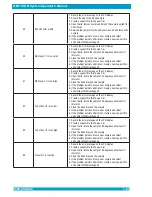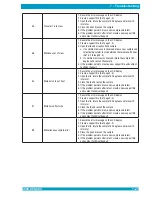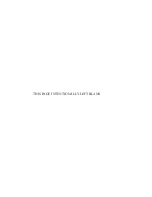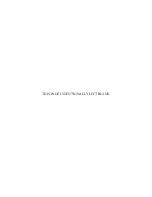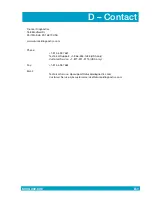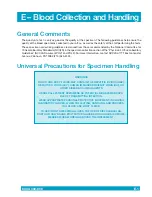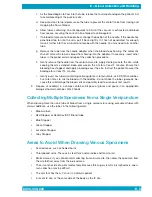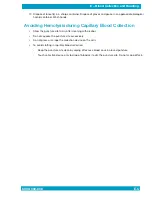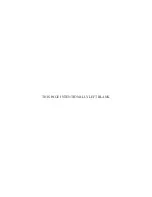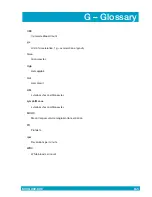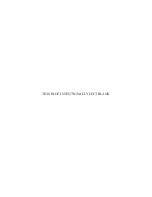
6000-300-000 E–3
E – Blood Collection and Handling
c As the blood begins to flow into the tube, release the tourniquet and open the patient’s fist
to avoid bleeding at the puncture site.
d Keep constant, forward pressure on the tube to prevent the shutoff valve from closing and
stopping the flow of blood.
e Allow tubes containing an anticoagulant to fill until the vacuum is exhausted and blood
flow ceases, assuring the correct ratio of blood to anticoagulant.
f
If a blood sample cannot be obtained, change the position of the needle. If the needle has
penetrated too far into the vein, pull it back slightly. If it has not penetrated far enough,
move it further into the vein, but do not probe with the needle. You may need to try another
tube.
g Remove the tube from the needle adapter when the blood stops flowing. The automatic
shut-off valve will stop any blood from flowing into the adapter. If necessary, insert other
tubes in the proper order and repeat the collection procedure.
h Gently remove the needle from the venipuncture site. Apply sterile gauze to the site, while
keeping the arm extended. Keep pressure on the site for at least 2 minutes. Ensure that
bleeding has stopped, and apply a bandage over the site. Instruct the patient to wear the
bandage for at least 15 minutes.
i
Gently invert any tube(s) containing anticoagulant or clot activators, as in SST Brand tubes,
five to ten times to mix the blood with the additive. Do not shake the tube vigorously, be-
cause this will damage the blood cells and possibly lead to erroneous test results.
9 Dispose of needle(s) in a sharps container. Dispose of gloves and gauze in an appropriate
biological hazard container. Wash hands.
Collecting Multiple Specimens from a Single Venipuncture
When drawing more than one tube of blood from a single venipuncture using evacuated tubes with
various additives, use the tubes in the following order:
• Blood culture
• Red Stopper or Red/Gray (SST Brand) tube
• Blue Stopper
• Green Stopper
• Lavender Stopper
• Gray Stopper
Areas to Avoid When Drawing Venous Specimens
• Scarred areas, such as healed burns.
• Thrombosed veins. These veins feel thick and cord-like and tend to roll.
• Bruised areas. If you cannot avoid collecting from a bruise site, then draw the specimen from
the site farthest away from the bruised area.
• The arm on the side of a prior mastectomy. Because this surgery results in lymphostasis, speci-
men collection may be difficult.
• The arm that has the A-V shunt in a dialysis patient.
• A recent IV site, or the same side of the body as the IV site.
6000-300-000 E-3
Summary of Contents for QBC STAR
Page 14: ...THIS PAGE INTENTIONALLY LEFT BLANK...
Page 28: ...THIS PAGE INTENTIONALLY LEFT BLANK...
Page 40: ...QBC STAR System Operator s Manual 6000 300 000 4 12 THIS PAGE INTENTIONALLY LEFT BLANK...
Page 50: ...THIS PAGE INTENTIONALLY LEFT BLANK...
Page 72: ...6000 300 000 A 1 8 Appendices 6000 300 000 8 1...
Page 74: ...THIS PAGE INTENTIONALLY LEFT BLANK...
Page 76: ...THIS PAGE INTENTIONALLY LEFT BLANK...
Page 78: ...THIS PAGE INTENTIONALLY LEFT BLANK...
Page 80: ...THIS PAGE INTENTIONALLY LEFT BLANK...


